
Main Square
The Plaza Mayor of Cáceres is considered the main entry point to the monumental city. The buildings are from different eras, preserving 16th century arcades, and whose prevailing general style is popular architecture, Although many of these buildings underwent modifications in the 19th centuries, XX and XXI. In it are emblematic buildings such as the Ermita de la Paz, City Hall, as well as numerous hotel and gastronomic establishments.
Direction: Main Square
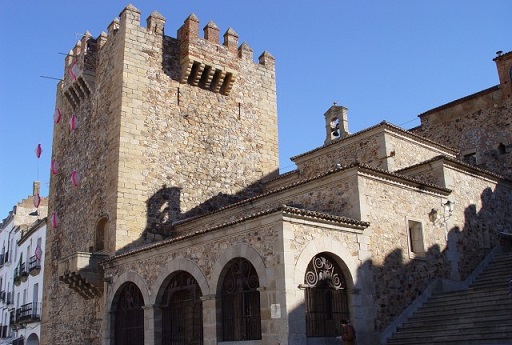
Bujaco Tower
The Bujaco Tower it is the most important in the city, Also known as New Tower, It is in Arabic style and was built in the 12th century, on Roman ashlars. Its height is 25 meters, and inside is a worthy interpretation center on the past of the city, while offering fantastic views from its viewpoint.
Direction: Plaza Mayor s / n
Schedule: Tuesday to Sunday from 10.00 a 14.00 h and from 16.00 a 19.30 h.
Telephone: 927 246 789
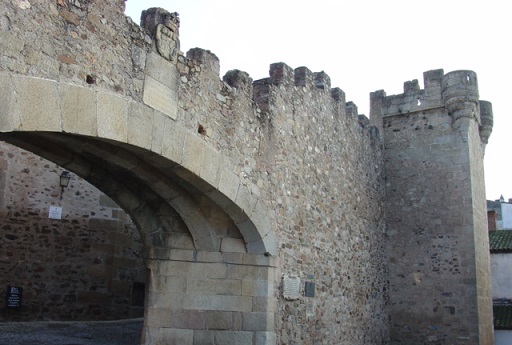
Pulpits Tower
The Pulpit Tower is about 16 meters high and unlike the Arab towers, it was built using stone blocks instead of masonry or mud, what gives it a different aesthetic. Likewise, It is the only tower that is linked by an 18th century arch-bridge, with a building inside the wall, specifically with the Palacio de Mayoralgo, so that its residents could see the shows held in the Plaza Mayor.
Direction: Main Square 7
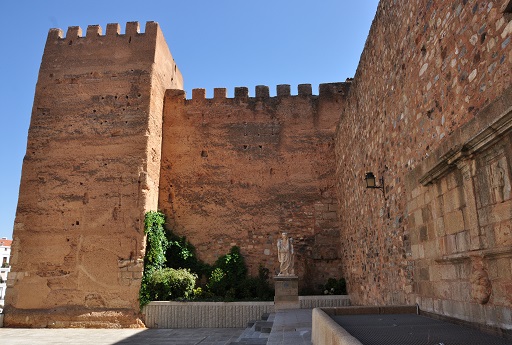
Yerba Tower
It is a construction of Arab origin and raised on Roman ashlars. It is located near the Foro de los Balbos and the Plaza Mayor itself. Like her companions, she shares a square plan and stands within the defensive fence of the monumental city of Cáceres. It is known as a tower albarrana (those that serve for defenses and also as a watchtower). It was one of the last constructions when Cáceres was in Muslim power and dates from the 12th century.
Direction: Main Square 41

Forum of the Balbos
The Forum of the Balbos of Cáceres, formerly also known as the Atrio del Corregidor, which previously constituted, a gate from the ancient Roman colony of Norba Caesarina. The Foro de los Balbos is the square that joins the City Council of Cáceres, the Yerba Tower and the Horn Tower, the latter through some stairs.
Direction: Plaza Mayor s / n
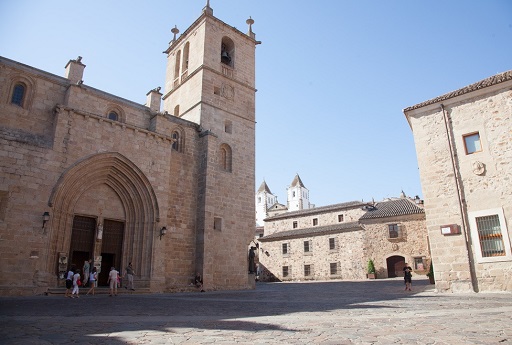
Plaza and Church of Santa María
Plaza de Santa María is the center of Cáceres. It is located after the Arco de la Estrella and there is the Church of Santa María, which was the first Christian temple raised as a result of the Reconquest. This square is a meeting place and is famous because it hosts many of the celebrations that take place in the city.
The Santa Iglesia Concatedral de Santa María is the most important Christian temple in Cáceres, and from 1957 has the rank of Co-Cathedral. The origin of this church dates back to the 13th century, Romanesque style, although it was later rebuilt and currently has a late Gothic style.
Direction: Santa Maria Square 4
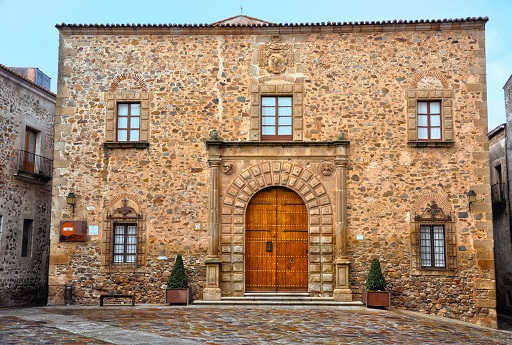
Episcopal palace
This palace was the residence of the bishop of Coria, and its oldest construction dates from the 13th century, being the main Renaissance façade from the 16th century and the Gothic side from the 15th century. The main facade was made in 1587 by Bishop Don Pedro García de Galarza, according to the frieze of the same.
Direction: Santa Maria Square
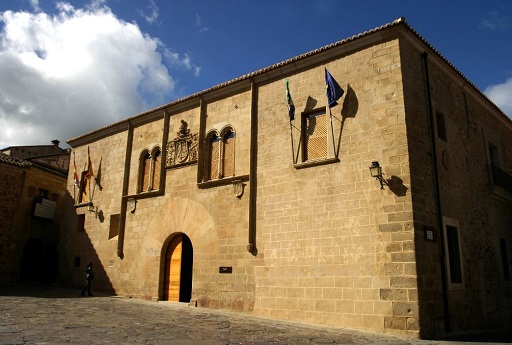
Mayoralgo Palace
It is a stately mansion, from a family that founded an important estate, the first in the province and one of the oldest in Spain, hence the name of the palace. The facade is renovated after being destroyed by a bomb that fell in the Plaza de Santa María during the Spanish Civil War. The building presents various construction phases: in Gothic style is the side façade and the patio. Under the shield there is an inscription that refers to the coat of arms of this family, half eagle and half tower.
Direction: Santa Maria Square 8
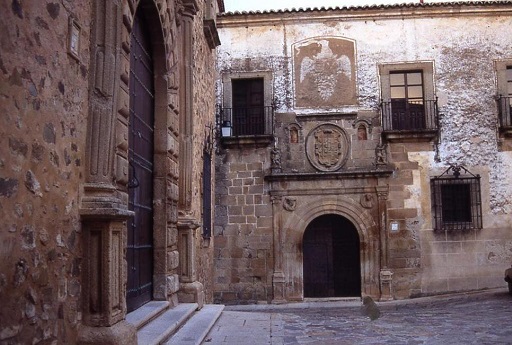
Hernando Ovando's house
It was built in the 16th century in the Plaza de Santa María, and it is distinguished because in the angles of the arch of the main door two medallions with the figures of the Ovando family can be seen, family to which it belonged. It is in the Renaissance style, and underwent reforms in the 18th century, and with that figure it remains to this day.
Direction: Santa Maria Square 2
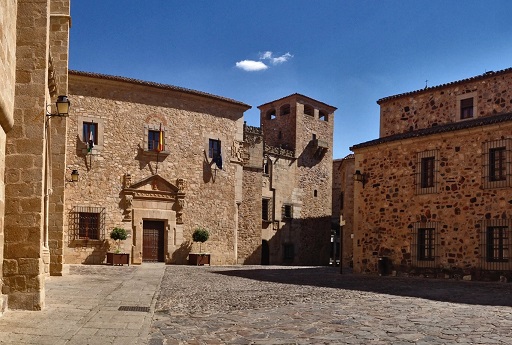
Palace of the Provincial Council / Provincial Palace
This palace is found between the Church of Santa María and the Palace of the Golfines de Abaj. From the 15th century to the present, It has undergone numerous reforms and has also had various uses, It was originally the convent of Santa María de Jesús, and subsequently institutions such as the Civil Government have been installed in it, and since the middle of the 20th century it is the headquarters of the Provincial Council, and highlights its Renaissance style façade.
Direction: Santa Maria Square
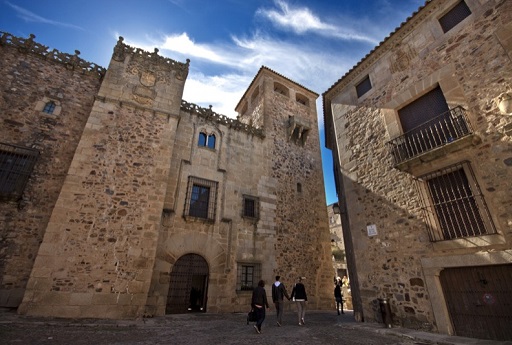
Palace of the Golfines de Abajo
This palace is one of the most important monuments in the city, it was built in the 15th century, and is formed by a main door with a semicircular arch, a square tower on the left, and on the right a tower crowned by a coat of arms of the Golfines. The name “from below” serves to differentiate it from the other branch of the family, "above". It is currently a private unit.
Direction: Plaza de los Golfines s / n

St. George Square
This square usually surprises the visitor with its altarpiece, composed of the Church of San Francisco Javier, Baroque construction from the 18th century and the Convent of the Society of Jesus from the same century, and current Exhibition Palace of San Jorge. On its right bank is the House of the Becerra, Gothic style of the s. XV, with a semicircular façade on which the emblems of the Paredes families rest, Ribera, Becerra and Orellana.
Direction: St. George Square
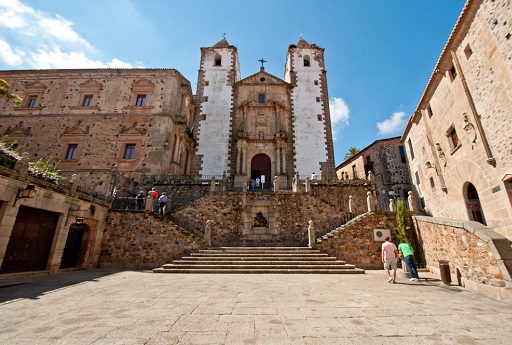
Church of San Francisco Javier
This church and school complex was built by the Society of Jesus in the 18th century, It is in the Baroque style and constitutes a large space in the center of the Monumental City. The interior is a single nave with side chapels, and a dome. It is located in the Plaza de San Jorge, between the oldest squares of Santa María and San Mateo. The sculpture of Saint George, city pattern, gives it its name and presides over the square.
Direction: St. George Square 9

San Mateo Square
It is located in the square from which it is named, formerly used as the main square of the Muslim city. In the Middle Ages and early Modern Ages, it was one of the two intramural collations around which the palaces and strong houses of the most important families were arranged..
Direction: San Mateo Square
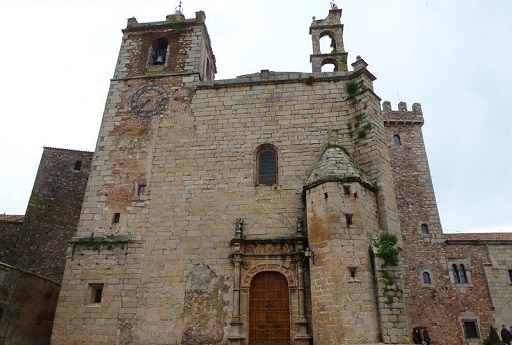
Church of San Mateo
The church was built in the 16th century, possibly on the site occupied by an old mosque. Its cover stands out with plateresque decoration, and inside, the main altarpiece of pine in its color is the work of 1766, made by Vicente Barbadillo. The Chapel of the Sande, current sacristy, It has a Gothic interior and on the walls are the burials of the noble families of the city: Ovando, Golfines, Walls, Saavedra, among other.
Direction: San Mateo Square
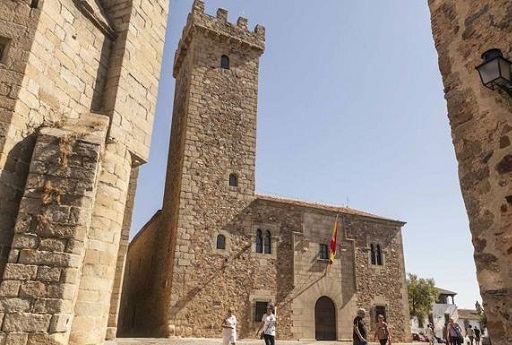
Palace of the Storks
In this building the tower stands out, much higher than those of the rest of the palaces of the monumental complex of Cáceres, because when Queen Elizabeth the Catholic ordered the towers to be destroyed, made an exception with this, since then it was being built. It is currently the headquarters of the Military Command of Cáceres, and inside is the Museum of Weapons.
Direction: San Pablo Square 1
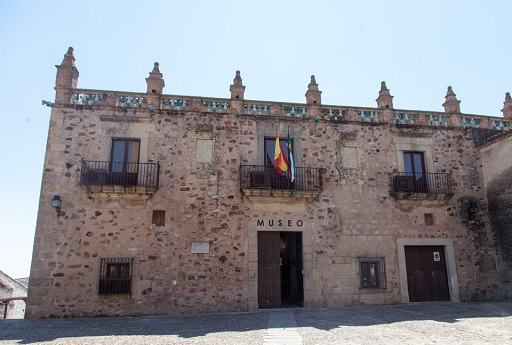
Palace of the Veletas / Cáceres Museum
This building dates from the 16th century and stands on the remains of an 11th century cistern, place where the old fortress was. Two large baroque shields stand out on the main façade, and at the back is a courtyard with gardens. Currently there is the Museum of Cáceres, that communicates with the horse house through a small bridge.
Direction: Veletas Square 1
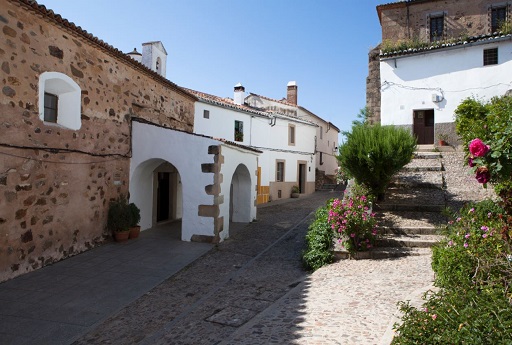
Old Jewish Quarter
Larger than the New Jewish Quarter, has preserved a popular housing appearance of one-story houses with whitewashed walls, disorganized openings and large brick fireplaces. The neighborhood adapts to the unevenness of the terrain, so there are steep slopes hidden by parapets that give it the popular name of Barrio de la Quebrada.
Direction: San Antonio neighborhood 30

Convent of San Pablo
It is a Beguinage founded in the 10th century that was later erected as a convent, gothic style. Poor Clare nuns still reside in the convent. Other inhabited convents are the Convent of Santa Clara, in the square of the same name, and the Convent of the Jerónimas, in the old San Antonio Infirmary, on Olmos street. In this cloistered nunnery you can buy famous handmade sweets.
Direction: San Mateo Square 2
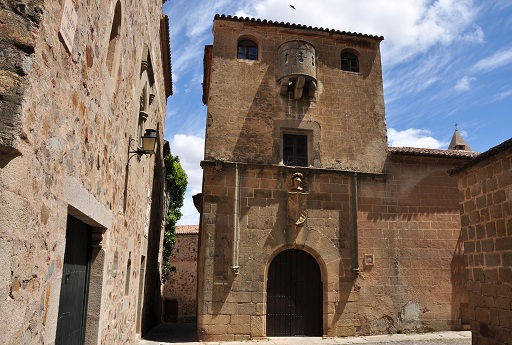
The House of the Sun
The house of the Solís or the Sun, It is one of the notable constructions of the historic site of Cáceres. It is a Gothic-style fortress house, raised in the 15th century, and renovated in the 16th century. The most significant element is the family crest, a sun with a human face whose upper rays appear bitten by the heads of a dragon. Currently, houses an important archive with documents on America and the Philippines.
Direction: Nun Street 2
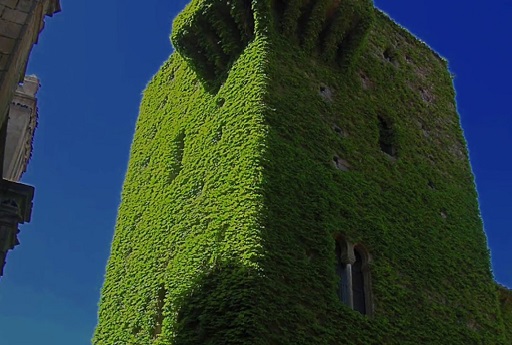
The Tower of Sande
This House and Tower of Sande is included in a House of Saavedra, belonging today to the Viscounts of Roda, which has its main entrance on Calle de los Condes. It's gothic, 14th century, rebuilt in the 15th century.
Direction: wide street 5
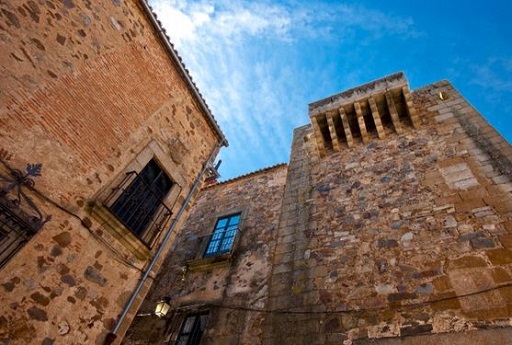
Palace of the Golfines de Arriba
It is one of the most impressive of the city's monumental complex., that recalls the idea of a house-fortress, with a strong defensive character due to its corner towers, and the great keep in the center. The façade plate indicated that being on it, Francisco Franco, He was proclaimed Head of State and Generalissimo of the Spanish armies.
Direction: Plaza de los Golfines s / n

Palace of the Generala
It is one of the most impressive of the city's monumental complex., that recalls the idea of a house-fortress, with a strong defensive character due to its corner towers, and the great keep in the center. The façade plate indicated that being on it, Francisco Franco, He was proclaimed Head of State and Generalissimo of the Spanish armies.
Direction: Plaza de los Golfines s / n
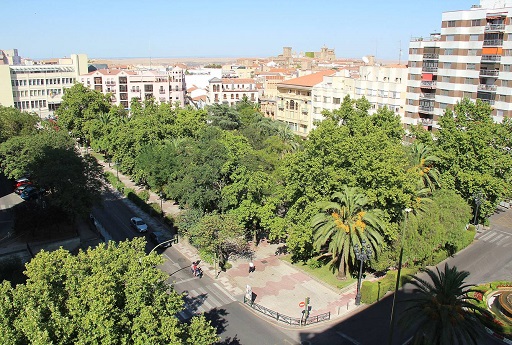
Canovas Walk and Calvo Sotelo Park
It is a true artery of the city, that in its initial and central sections has some games for the little ones. It is located on Avenida de España and in the flowerbeds located in the center and on the sides there is a large catalog of tree species. This walk is one of the most common places for people from Cáceres. It is also a very busy shopping and leisure area.
Direction: Of. From Spain